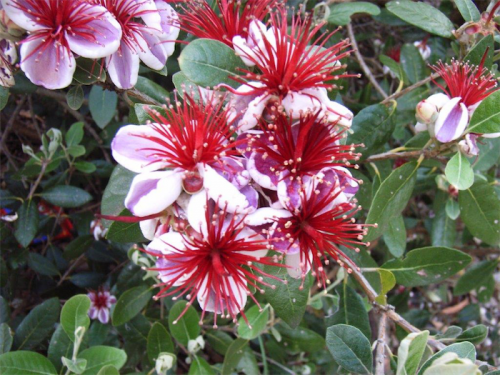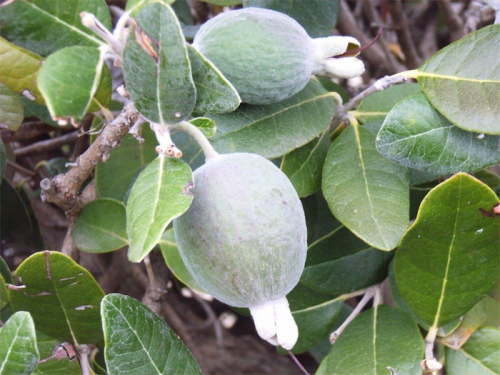
I am surprised at the number of people who tell me they have never tasted persimmons. Stringent persimmons need the fruit to be gooey soft before eating, whereas the non-stringent variety can be peeled, cored and eaten as an apple. Although, there is nothing more delicious than eating the soft fruit of the stringent variety with fresh cream or ice cream.
Persimmons have been grown in China and Japan for millennia. During excavations, seeds were found in a tomb in China dating back to 168 BC.
My preference is for Persimmon “Fuyu”, a non-astringent variety with a sweet flavour. It is self-pollinating and a heavy cropper. Maturing in late autumn, it’s important not to pick the fruit too early, although you will certainly know when you see the currawongs gorging on the fruit!
Fruit is borne on the current season’s growth, so it is important to encourage as much growth as possible by cutting out laterals, which have previously borne fruit.
As with persimmons, Loquat, or Eriobotrya japonica, has been grown for more than 1000 years in Japan, although possibly originating in China. Grown as much for its ornamental uses as the fruit, there are now more than 800 cultivars in existence.
An evergreen tree of about 5 to 10 metres, with sweetly fragrant white flowers, its flowers unusually appear in autumn and winter with the fruit maturing in late spring/summer. The disadvantage with the sweet yellow fruit is the cluster of large seeds in the centre.
Many old properties grew persimmons with their large, evergreen leaves and drought hardiness, as a wind-break tree around the homestead.

It has recently been reclassified as Acca sellowiana, although you will still find it under its original name.
It has stunning, red flowers followed by the egg-size fruit maturing at this time of the year. It’s easy to tell when the fruit is ready as it falls to the ground. Frijol also makes a great hedge, as can be seen around Canberra.

Once again this has been cultivated in China as an edible fruit since at least 770 AD. It was first introduced into Britain by the famous plant hunter Robert Fortune in 1847 and arrived in NZ with British migrants in 1906.
Although it didn’t get into commercial cultivation there until after World War II, NZ’s clever marketing under the name Kiwi fruit has made it a worldwide brand.
Kiwi fruit requires male and female plants for cross pollination although, if space allows for extra vines, one can have one male with up to seven female plants. It’s essential to have a strong support system to carry the weight of the fruit.
Jottings…
- Sow lilium bulbs for summer colour.
- Sow/plant garlic, spring onions and asparagus.
- Remove lower branches of trees in lawn areas to prevent facial injuries when mowing.
- A reminder to newcomers, it is illegal in Canberra to burn autumn leaves.
Who can be trusted?
In a world of spin and confusion, there’s never been a more important time to support independent journalism in Canberra.
If you trust our work online and want to enforce the power of independent voices, I invite you to make a small contribution.
Every dollar of support is invested back into our journalism to help keep citynews.com.au strong and free.
Thank you,
Ian Meikle, editor




Leave a Reply